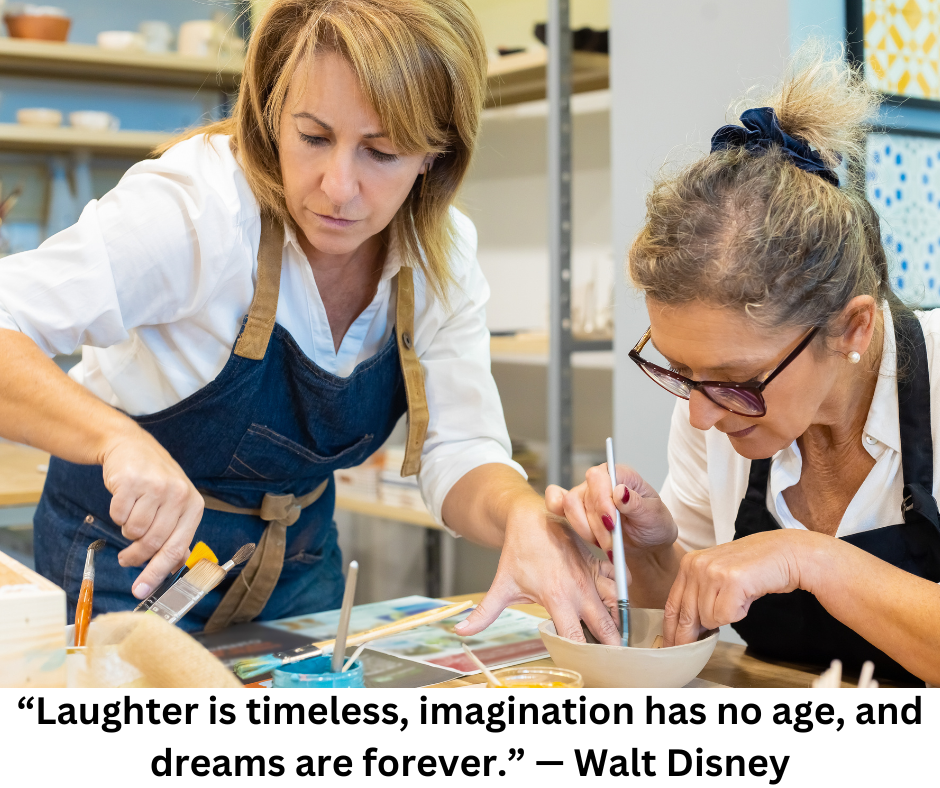How a Great Speaker Engages an Audience
Pat Alva-Kraker ○ April 21, 2020
So you’re giving a speech? You’re probably either excited, terrified, or confused. Most likely, you’re a combination of all three. A lot of people have natural stage presence and can woo an audience with little effort, feeling energized and excited to perform. But maybe you’re in the terrified camp, nerves getting the best of you and stage fright taking over. Performance anxiety is one of the most common fears around the world, so even professionals fall victim to it. You’re not alone.
But for most of us, we don’t know how to give a great, audience-engaging speech. We’re left scratching our heads, wondering how to shake the nerves and offer fantastic performances. So, how do great speakers do it? They tend to assess, plan, personalize, and adapt. Let’s take a look at what that means for the average speaker.
What Gets in the Way?
When you have a fear of public speaking, your goal can quickly change from ‘give a great speech’ to ‘get through your speech at lightning speed.’ Most audiences want to be entertained and engaged by their speaker, so it’s vital to use your time on stage as best as you can. When nervous, we tend to babble and lose our natural cadence. Speeches fall flat, leaving the audience wanting more.
The Steps of a Great Speaker
So, how can you—despite your nerves—engage your audience? There are a few tricks that you can adopt that will take the attention off your stage fright and properly involve your guests. You don’t need to reinvent the wheel when you can follow the steps of a great speaker.
Assess the Situation
Every audience is different. That’s an obvious statement, but it covers more than just the people in attendance. What time is your speech? Does it fall within dreaded sleepy zones, such as early in the morning or after lunch? Is it late in the afternoon, the last performance of the day when everyone is ready to go home? Where is it located? Are guests sitting in rows or tables? How many people are attending? All of these factors contribute to how you can best engage your audience.
Plan, Plan, Plan
Now that you’ve assessed your particular situation, it’s time to plan. The average speaker imagines their performance as a simple act: you get on stage, you give your speech, and you say goodbye. If you approach every address like this, you will inevitably fail. If you want to engage your audience as a speaker, you must plan for your particular situation.
For example, the way you present your information will be distinct for a broad audience sitting in an auditorium. To engage so many people in an impersonal setting, you must utilize your voice, your humor, and lots of visuals. If you have a smaller audience sitting in round tables in a small room, you can be far more interactive with them. Interacting with your audience is one of the best ways to keep them engaged.
Don’t forget to consider the timing and lighting. If you’ve drawn the short stick and must give your speech after lunch in a darkly-lit room, you’re in for a challenge. A lot of people will be late, and the rest will be sleepy. In this case, it’s essential to consider your presentation style. You’ll need to use visuals, videos, music, and other tactics to keep the energy high.
Personalize It
You’ve already personalized your speech techniques for your precise situation. Well done! But now you must make your content personal. Start your speech with a story so your audience can get to know you. If they care about you as a person, they’ll care more about what you’re presenting.
Getting personal is one of the best speaker strategies when engaging your audience. But if you don’t feel like you can be particular for yourself, then try to be intimate with them. Start with a story to which they can relate. Maybe it’s an everyday struggle in the industry or something that pulls at their heartstrings. Soon enough, they’ll be nodding along thinking, wow, this speaker gets me!
Prepare to Adapt
Guess what? Regardless of who much you plan, the situation might change. Great speakers know how to adapt. Maybe you scored the prime speaking time, but then your audience turns out to collectively carry the energy of a sloth. You’ll need to adjust by upping your energy, asking the audience questions, telling a story—something to wake up your guests.
Because things don’t always go according to plan, it helps to have a few tricks up your sleeve. Have more interactive handouts that you can employ if you need your audience to get moving and talking. Include a nonessential video or two that you can play if your guests need some stimulation. If you assess, plan, personalize, and adapt, you will surely engage your audience and feel successful as a speaker.
What are you interested in? Entrepreneurship, Growing your Business? Managing Stress? Starting a Business? Put a keyword in the search and we'll take you to the right place!

"You are never too old to set another goal or to dream a new dream." - C.S. Lewis Ladies, I recently met a woman who switched careers at 55. She said, "I’m just getting started!" Her excitement was contagious. Reinventing yourself isn’t just possible—it’s necessary for growth. 🌱 Stay open to learning new skills or exploring new passions. Reinvention is key to relevancy. For more insights on longevity, vitality and relevancy, join the conversation on LinkedIn!

Ever feel like your energy just isn’t what it used to be? You wake up tired, need more coffee than usual, and by mid-afternoon, you’re crashing hard. Let me introduce you to Lisa, a client of mine who was once in that exact spot. She was 52, an executive, and constantly drained. “I just don’t have the energy I used to,” she admitted. But the truth? It wasn’t age stealing her vitality. It was her habits. With a few simple tweaks, Lisa completely turned her energy around. And today, I’m sharing those shifts with you. Why Energy Declines After 45 (And How to Fix It!) Your energy isn’t just about sleep—it’s about how you fuel your body, mind, and soul. Here are three things stealing your energy (and how to reclaim it): 1️⃣ You’re Not Hydrated Enough. Dehydration is sneaky—it mimics fatigue. By the time you feel thirsty, your body is already depleted. ✔ Fix it: Start your day with 16oz of water. Keep a bottle nearby and sip all day. 2️⃣ You’re Overloading on Caffeine. That second (or third) coffee? It’s draining you. Caffeine spikes energy but leads to a crash. ✔ Fix it: Swap out an afternoon coffee for green tea or electrolytes to sustain energy. 3️⃣ You’re Not Moving Enough. Exercise isn’t about weight loss—it’s about energy circulation. Sitting too long slows blood flow, which makes you feel sluggish. ✔ Fix it: Set a timer to stand up and move every 30 minutes. A quick walk or stretch does wonders! Your Energy Makeover Challenge Lisa committed to hydrating more, cutting caffeine in half, and walking 10 minutes every morning. Within two weeks, she felt like herself again—alert, focused, and full of life. Now, it’s your turn. 💡 CTA: What’s ONE energy-boosting habit you’ll start today? Join the conversation on LinkedIn! Let’s reclaim your vitality together. 💪✨

"Laughter is timeless, imagination has no age, and dreams are forever." - Walt Disney Do you remember the last time you played just for fun? A study in the Journal of Aging Research found that adults who engage in playful activities have lower stress and live longer. Meet Lisa, a successful entrepreneur who had lost her sense of joy. She decided to take a pottery class —just for fun. It transformed her mindset. She felt more creative, relaxed, and energized in her daily life. Play isn’t just for kids—it’s a vital part of mental and emotional well-being. ✔ Dance, paint, or sing— do something just for fun. ✔ Try a new hobby— curiosity keeps the brain young. ✔ Laugh often— joy is a powerful anti-aging tool. 💡 CTA: What’s one fun activity you’ll try this week? Join the conversation on LinkedIn!

Do you feel the pressure to raise the bar in your business at the beginning of a new year? I've felt like that, too. This year I decided that I want more in my business and life; more ease and grace, more play time and more joy. I want my business to be driven more from within, my higher-self and source. This requires surrender, listening and trusting the journey. For me, surrender means letting go of the outcome and the “how”, especially the “how”. I have a morning routine that includes meditation. I’m now asking during my meditation time; what do you want me to know, do and be? Whatever message comes through, I have committed to follow and trust that it’s for my highest good and in response to my ask for “more”. I’m, in essence, an employee to my higher-self. What a fresh way of looking at my business! Right? Did you know that you, too, can have the CEO of your company be your higher-self – Source. Did you know that when you apply this way of running your business, everything changes, transformation happens and your imagination goes beyond what you thought was possible? In my 35 years of working for corporate, I never received training that taught me to surrender and trust my higher-self for the answers. I’m committed to you, as a mentor, to bring this way of running your business with ease and grace. Are you ready to shift to a different way of growing your business and making an impact? Let’s chat about how you are doing business today and create a path to more ease and grace, fun and joy. Click the button below to schedule a complementary 30-minute session where you will walk away with at least one idea to implement.

Like a hummingbird, when we live our day empty, there is a delicious freedom of not having to be anything other than who we are. The rest of the story: We are fully present to our senses. We see things in their true nature. We smell the sweetest of scents. We hear even the smallest of leaves fall and our skin is sensitive to the slightest of breezes. We live empty and open. Are you full of the noise of the past or worrying about the future? Distractions from the present moment prevent us from receiving intuitive messages, and seeing the opportunities in front of our eyes. Take a deep breath and bring your attention to the present moment. “Excerpt from the Amazon’s bestselling book “Katherine’s Quest: One Woman’s Journey to Elation”. To order the book click here

Gratitude is one of the highest and most empowering states you can achieve. Being grateful raises your vibration level and truly magnetizes you to attract more positive energy into your life. When you are grateful you feel joyful, satisfied and filled with heartfelt appreciation for what you have received and continue to receive. You basically tell the universe, “Thank you, this is wonderful – send me more please!” The universe dutifully responds to your request by sending you even more reasons to be grateful. It must respond in this way; universal law demands it. How do you become more grateful and therefore, attract more of what you truly want? These five practices are a good start. Choose one and practice it for 30 days. Express gratitude to others . This could be as easy a phone call, a text or a thank you note. Rarely do we receive cards any more. Imagine the smile on their face when they receive your note. Wow! Can you imagine the positive impact you would have on their day? Adopt the “gratitude is an attitude” lifestyle . Everyday write down five things you are grateful for and why you are grateful for that particular experience or thing. Just 15 minutes a day focusing on the things you’re grateful for will significantly increase your body’s natural antibodies. This can be done at the beginning or at the end of your day. Look for what you want to see vs. what you don’t want to see. Too often we go about our day waiting and expecting awful things to happen, or we expect to be disappointed. Some of us walk around saying, “I don’t like this, and this, and that….” and look for things that need changing. I wonder what your day would look like if you focused on what you did indeed want to see. “I like this, I like that…. oh, and I really love that!” You would be a better a mood, smile more and see the good in all. Thank yourself. Gratitude doesn’t always need to be focused on what other people have done for you! Make sure you give yourself a thank-you for the healthy habits you’ve cultivated in your day and life, such as eating a balanced meal or giving yourself enough time for rest each night. Look for the silver linings. Even the most difficult times in our lives come with some benefit—you just have to look. Making a mistake teaches you a lesson. Being sick draws the attraction of family and friends. When things seem hard, ask yourself: What’s good about this situation? Gratitude is a magical therapy. Start collecting the magic today. What are you most grateful for?

Have you had a day where you have said “I hope to not have another day like this” or “I wish all my days were like this”? We all have those days. Some days we live our day from the neck up. Our mind chatter dictates our mood or how we feel about ourselves. Our chatter instills a lack of confidence and we play small, make decisions from fear or worse take no action at all. The bummer part about it is that sometimes we are unaware that this is happening. Each morning we get to start brand new and be conscious and intentional about our day. I love it! Have you had that kind of day when you wake up feeling rested, positive and full of energy? You connect with what truly matters and your decisions throughout your day come from this place. There’s this wonderful and peaceful place of alignment. Ahh…you want more of these days. It’s all there for you every morning. Embracing each morning as a new beginning allows you to be open to possibilities, to remind yourself what it feels like to make decisions from your heart and to acknowledge that you are exactly where you need to be. “Embrace each morning as a new beginning” …. Pat Alva-Kraker – excerpt from Katherine’s Quest: One Woman’s Journey to Elation. Pre-Order at https://amzn.to/2EP69O0 .

Passion is an essential piece of the entrepreneurship puzzle. Without it, it’s more challenging to get your footing as a new entrepreneur. It’s a driving force behind preliminary success, and it’s easy to find in the beginning. But what happens when it starts to wane? How do you find your passion again and again? Any seasoned entrepreneur will tell you that passion will fade. It’s inevitable. But the key to prolonged success in starting and running your business is always to find your passion, even when it takes a temporary hiatus. Why? Because without it, it’ll be challenging to keep your energy infused in your daily tasks. The Magic of Passion in Entrepreneurship Passion is like a magic wand for new entrepreneurs: it can change the things you don’t like into exciting endeavors. When you’re enthusiastic about something, those menial, tedious tasks magically become stepping stones leading you to your goals. Of course, not everything will be butterflies and rainbows. But doing something with emotion will always feel more natural than doing it without, and it will often bring you more success. So what do you do when that magic is gone? Find Your Passion at the Start When your energy fades, or you start to experience burnout, it’s often a loss of passion. You had it once before, where is it now? The secret is to go back to the beginning. If you seek business coaching, you’ll learn the importance of keeping a personal record of your journey. If you write down why you started this endeavor, you can quickly and personally remind yourself of that essential ingredient. We all need those reminders of why we dove into entrepreneurship in the first place! Connect With Clients & Customers As new entrepreneurs, life is usually inspiring despite the challenges. Your adrenaline is pushing you through, dominating roadblocks. But when we start to sink into the pile of mundane tasks, the passion can quickly begin to fade. Remind yourself of why you started your business (as in #1) and then connect with the people you’re helping. When you take some time to reconnect with the WHY and interact with your devoted clients or customer base, then you’ll eventually start to feel the magic again. This process will need repeating as you continue your journey. Seasoned entrepreneurs know that passion is something that you’ll chase for many years. Find Your Passion in Other Things Life cannot be all about your business! If that’s the case, you’ll undoubtedly experience burnout and lose passion forever. Instead, diversify your sources of energy. If passion starts to fade in your work, take a little break, and explore it in something else for an afternoon. Maybe it’s baking or gardening or hiking. Refresh your passion in something else so that you can insert it back into your business. Reach Out to Your Community In business coaching, this step is imperative to both new and seasoned entrepreneurs. Sometimes, you merely need to connect with someone else who “gets it.” Every business owner will experience this multiple times, so reach out to your safety net and ask them to help you find your passion again. Most likely, it’s just a phone call or a cup of coffee away. The Power of Positive Thinking Here’s the catch: when your passion starts to fade, it’s still inside you. It never leaves your mind; it’s usually just clouded by exhaustion and negative thinking. Enter the power of positivity and positive thinking. It might sound silly at first, but positive thinking is a common tactic in business coaching and successful entrepreneurship. By focusing on the good, you’re essentially focusing on your passion. Don’t squash honest emotion—when you feel bad, let it out. But then, try to center yourself around positive energy, which passion loves.



